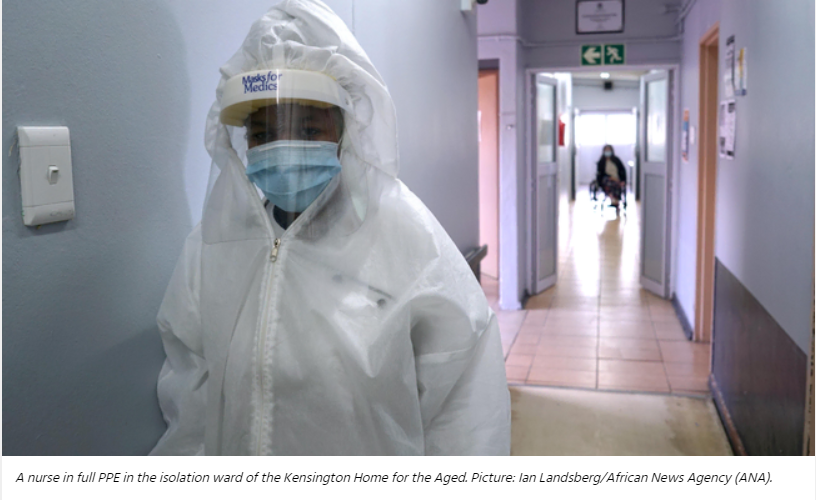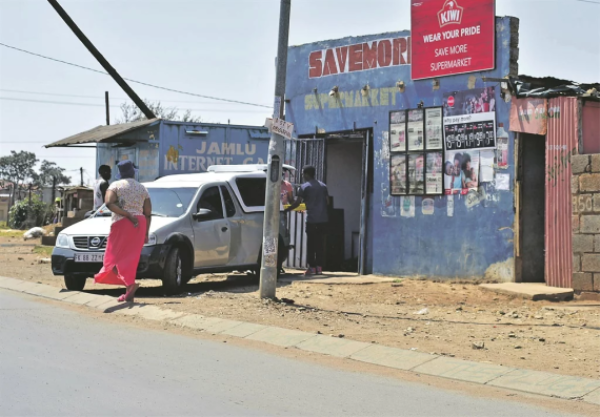Durban: The big Covid-19 third wave, which had been predicted to hit South Africa in the weeks after long Easter weekend holidays did not materialise, but scientists on the front line of the country’s battle against the deadly virus are concerned about an uptick in the number of new infections.
In the lead up to the Easter holidays at the beginning of this month, the government, on the advice of the National Coronavirus Command Council, imposed stringent lockdown conditions over the four day long weekend, including the prohibition of off-site alcohol sales, to stave off a rise in new Covid-19 infections.
Concerns had been raised that religious gatherings and other social events around the Easter holiday period could propel the country into a third wave of Covid-19 infections.
A person who has been infected with the virus can start showing symptoms anywhere from four to 14 days after contraction and given that the Easter holidays began on Good Friday, April 2 and concluded on April 5 with Easter Monday, a rise in the number of cases was expected from April 9.
However, data from the National Department of Health on new infections and deaths show that that new Covid-19 cases have stabilised around the 1 200 new infection a day mark. Over seven days, between April 7 and April 14, South Africa averaged 1 243 new infections.
While the highest number of new daily infections for April occurred on Wednesday, April 14, (1 599), this is relatively low when compared to the 13 449 new daily infections reported on July 19 during the peak of the first wave and the 17 421 new daily infections reported on January 10 during the peak of the second wave.
South Africa reported an average of 66.5 deaths over seven days, between April 7 and April 14.
During the peak of the first wave, South Africa recorded 305 deaths on a single day. on August 7 and 755 deaths on a single day, on January 12, during the second wave.
As of Thursday, there have been 1 562 931 infections and 53 571 coronavirus-related deaths reported since the pandemic began.
Dr Harry Moultrie, the senior medical epidemiologist at the Centre for Tuberculosis at the National Institute for Communicable Diseases, said that while we had not seen a substantial increase in cases since Easter, the seven-day moving average case incidence , when analysed by specimen received date, was slightly higher than the pre-Easter period in the Free State and the North West.
“Determining the causal link between Easter and any increase in cases is, however, not straightforward. Testing volumes, and thus Sars-CoV-2 case ascertainment, declined as expected over the Easter holidays,” Moultrie said.
“The slight increase observed in the post-Easter period could therefore reflect the resumption of pre-Easter trends in these provinces. The incubation period, time from symptom onset to testing, and laboratory processing and reporting turn-around times could however result in a longer delay between increased transmission associated with Easter and an increase in reported cases than suggested. The impact, if any, of Easter on the effective reproductive number will become clearer in a week or two.”
Professor Tulio de Oliveira, the director of the KwaZulu-Natal Research Innovation and Sequencing Platform that discovered the 501Y.V2 VOC variant of the Covid-19 virus in South Africa, agreed and cautioned about being too optimistic.
He said the 1 599 number of new infections recorded on Wednesday followed by the 1 372 new infections on Thursday meant that the numbers of infections, while relatively low, was not going down.
“The one thing that I personally worry about and what we are seeing is what we call the reproductive number of infections… so it means that the epidemic is not going down, but it is in fact spreading. And if you look more carefully at the granularity of the data across the provinces, for example, the Northern Cape, we can an increase in the number of infections. (On Wednesday,) the Medical Research Council released a report on the number of excess deaths and we can already see that the excess deaths are starting to increase again, both in the Northern Cape, but also in the Free State, which means that the third wave is coming,” he said.
General manager at the Lenmed Ethekwini Hospital And Heart Centre Niresh Bechan lauded the public for being mindful of the pandemic over Easter.
“We created capacity in anticipation of an influx of patients at our hospitals, but we are pleased to note that we had no Covid cases over Easter, and just one inpatient who tested positive,” he said.
Bechan noted a significant drop in elective surgery since the inception of Covid.
“This is a general observation in the medical fraternity and it is worrying,” he said cautioning that delaying treatment could be detrimental to health and that seeking medical treatment early, meant better outcomes.
“Cardiac and vascular issues arising from Covid, especially, can escalate rapidly if not treated urgently and while Covid-19 will be with us for the foreseeable future, it is essential to take care of your health,” he said.
Asked when or if a third Covid-19 wave would hit, Moultrie said: “There is still considerable uncertainty regarding the current levels of population immunity in South Africa. While there is potential for a third wave to occur, the timing and scale of a third wave are dependent on the factors giving rise to it. A third wave resulting from increased mobility, decreased adherence to social distancing and NPIs (non-pharmaceutical intervention) would likely be smaller than a third wave driven by additional viral mutations which result in significant immune escape.”
De Oliveira said South Africa needed to increase some of the public health response that meant not only testing but contact tracing quarantine and isolation.
“We need to focus at the granular level, especially at provincial and city levels to try to extinguish these chains of transmissions that seem to still be spreading. That would be the crucial thing for South Africa to do in the next few months, not only just wait and see if that big wave will come but to kind of really, really focus now that the numbers are not excessively high and on increase the basic public health response. Testing contact tracing isolating and quarantine because that if we do that, that will potentially not only delay but decrease the size of a third way,” he said.
Read the full article HERE






